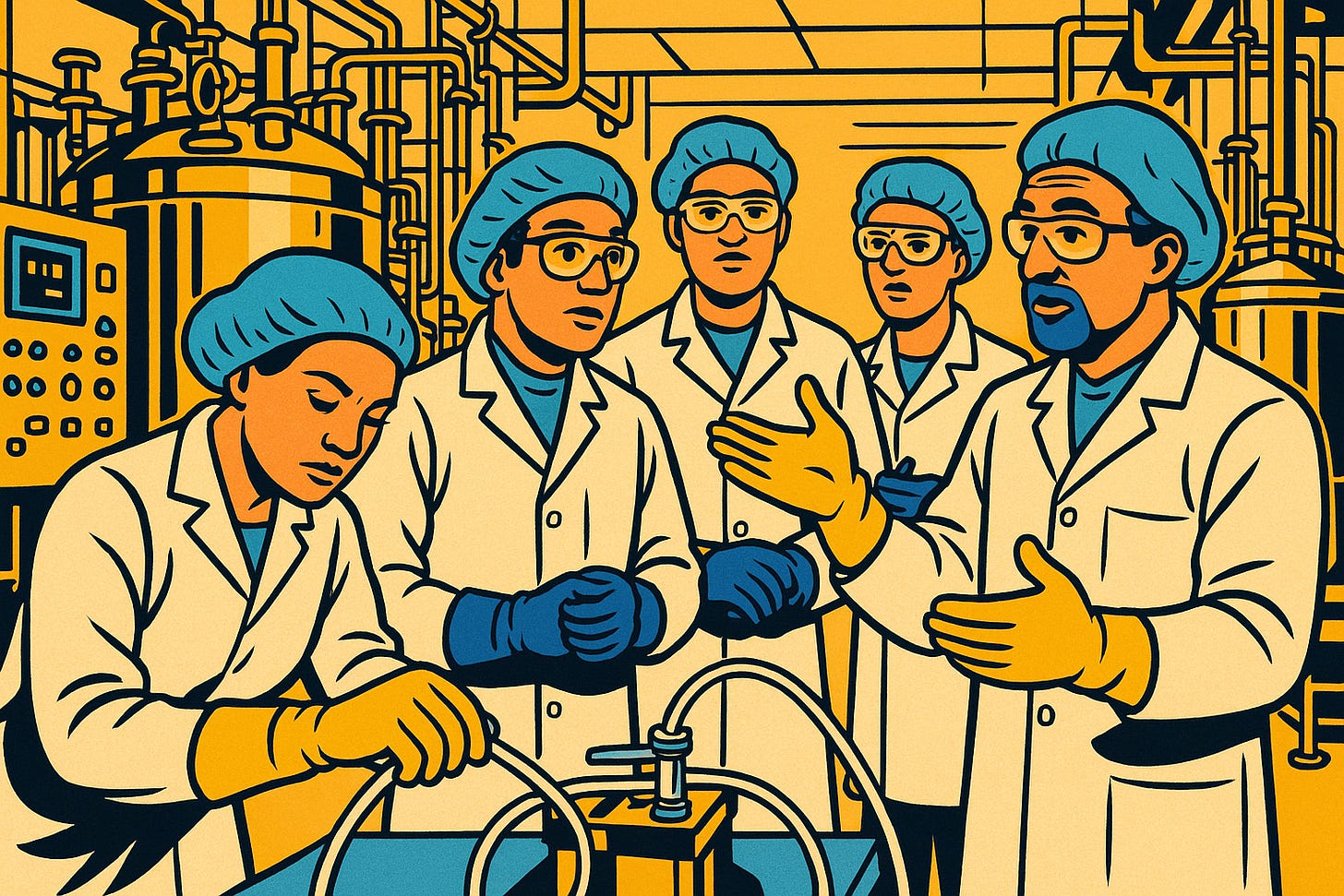If there’s one chapter in the National Security Commission on Emerging Biotechnology’s final report that lays bare the disconnect between potential and preparedness, it’s Chapter 5. The message is as critical as it is uncomfortable: we are not ready. Not ready to govern the biotechnology age, not ready to build it at scale, and not ready to defend our position in it.
That’s not a reflection of a lack of interest or ambition. The United States has the talent. It has the universities. It has the private sector demand. What it doesn’t have, at least not at the scale required for strategic dominance, is the human infrastructure to match the pace and complexity of biotech innovation. We are operating with a 20th-century workforce strategy in a 21st-century technological environment.
Chapter 5 doesn’t just identify the gaps. It names them. The federal government is under-equipped. The private sector is under-supplied. And the global competition for biotech talent is accelerating. If we want to lead in biotechnology, we have to build the workforce first.
The podcast audio was AI-generated using Google’s NotebookLM.
The Crisis in Bioliteracy
The opening section of Chapter 5 doesn’t mince words. America’s greatest strength has always been its people, and that strength has consistently come from our ability to educate, attract, and empower talent. But biotechnology demands something we have not yet built, a population fluent in the language of biology.
The Commission uses the term “bioliteracy,” and it’s exactly the right framing. Just as digital literacy became a prerequisite for economic participation in the information age, bioliteracy is becoming the baseline for participation in the next technological epoch. This doesn’t mean every citizen needs to clone DNA or run a fermentation bioreactor. It means they need to understand, in principle, how living systems can be engineered and why it matters.
Today, most Americans graduate high school with only a cursory understanding of biology. In government, the situation is even worse. The Commission found that most federal officials, those tasked with shaping and executing national biotechnology policy, have not taken a biology course since adolescence. Very few Members of Congress have any STEM background at all. At the Assistant Secretary level and above, expertise in biotechnology is virtually nonexistent.
It’s hard to lead in biotech if we can’t speak the language. And it’s impossible to govern if we don’t even know the grammar.
Section 5.1 – A Federal Government That Understands Biology
(Section 5.1 – Recommendations 5.1A-C)
The first of the three major workforce gaps the Commission addresses is the most straightforward: the federal government lacks the expertise it needs to govern biotechnology effectively.
The report recommends a series of reforms that are, frankly, overdue. First, Congress must direct the Office of Personnel Management to provide biotechnology-specific training across federal agencies. These programs should be tailored to different roles, from policy generalists to technical program managers, and they should be updated annually to reflect advances in the field.
Second, the Commission calls for the development of a National Biotechnology Workforce Framework. This is more than a taxonomy exercise. Right now, there is no standard way to define what a “biotechnology position” actually is across government. Without a shared vocabulary, hiring, training, and scaling become scattershot.
Third, the government needs to expand its use of hiring authorities and talent exchange programs. Programs like SME-QA and the AAAS Science and Technology Policy Fellowships are working but they’re not being used at scale. It’s not enough to bring in one or two bio-savvy advisors. Agencies need to build institutional biotech literacy, and that means embedding expertise across policy, procurement, regulation, and operations.
This is about more than competence. It’s about sovereignty. A government that doesn’t understand biotechnology cannot regulate it, cannot defend against its misuse, and cannot harness its benefits. In a world where biosecurity is national security, that is a strategic risk we can no longer afford.
Section 5.2 – Building a Domestic Workforce at Scale
(Section 5.2 – Recommendations 5.2A-B)
If Section 5.1 focuses on the government’s internal gaps, Section 5.2 turns its attention outward, to the national workforce as a whole.
The biotechnology industry is growing, but the pipeline of workers is not keeping up. Community colleges, vocational training programs, and even four-year universities are not producing enough skilled technicians and scientists to meet demand. In the post-COVID era, this gap has widened, especially in areas like mRNA production, cell therapy, and bio-based manufacturing.
The Commission’s recommendations here are targeted and practical. Expand federally funded workforce training programs like BioMADE, InnovATEBIO, and NIIMBL’s eXperience program. Standardize credentials and create national competency models. Align training curricula with the actual needs of employers.
The report highlights one of the most persistent challenges in biomanufacturing: the lack of credential portability. Right now, a technician trained in one state may not meet the standards of an employer in another, even if they’ve mastered the necessary skills. That kind of friction slows down hiring, drives up costs, and keeps capable people out of good jobs.
What’s needed is a system akin to what exists in skilled trades: microcredentials, national benchmarks, and clear pathways from training to employment. Biotechnology should be no different. It’s not just about preparing PhDs for research careers. It’s about building an ecosystem that includes electricians wiring cleanrooms, software engineers building lab automation tools, and veterans retraining to run fermentation lines.
Biotech isn’t a niche industry. It’s an industrial base. We need to treat workforce development accordingly.
Section 5.3 – Winning the Talent War
(Section 5.3 – Recommendations 5.3A-B)
The final section of Chapter 5 confronts a strategic paradox: the United States trains the world’s best biotechnology minds, and then it tells them to leave.
The data is clear. International students drive a significant share of our STEM graduate programs, particularly in biological sciences. Many of them want to stay. Most of them cannot. They face visa restrictions, backlogged green card systems, and a general environment of uncertainty. And while they wait, our competitors are recruiting.
China offers financial incentives and custom-built labs. Canada fast-tracks work permits. Europe invests in global talent hubs. The United States, in contrast, has made it harder for high-skilled foreign talent to contribute to the economy they trained in.
The Commission proposes two clear fixes. First, create a new green card category for biotechnology professionals, especially those from allied nations and U.S. institutions. Second, modernize the vetting process to protect against illicit technology transfer without shutting the door on legitimate contributors.
Security matters. But blanket exclusion is not security, it’s surrender. If we want to lead, we have to compete. And in biotechnology, talent is the terrain.
The Workforce Is the Frontline
There’s a reason this chapter is in the back half of the report. Everything else, the data infrastructure, the national labs, the industrial base, depends on people. And right now, our people strategy is the weakest link in the biotech chain.
We cannot innovate, regulate, or defend our position in this domain without a workforce that understands it. We need teachers and technicians, legislators and lab managers, researchers and regulators, all operating from a common foundation of biological fluency.
This isn’t just about jobs. It’s about national capacity. About whether the United States can rise to meet a century defined by life sciences. The Commission has shown us the map. Now we need to build the bridge.
And the bridge, as always, begins with people.
Cheers,
-Titus














